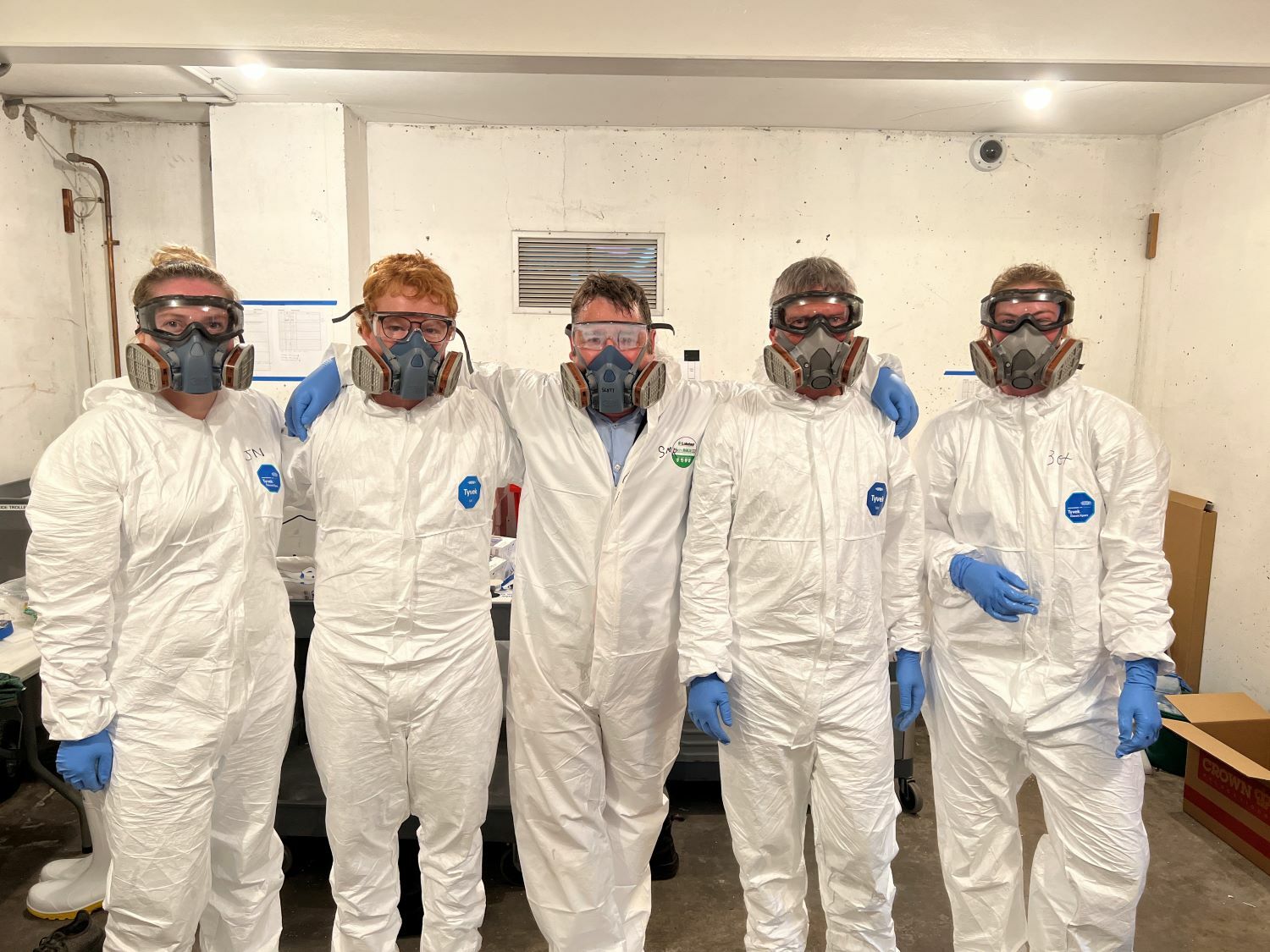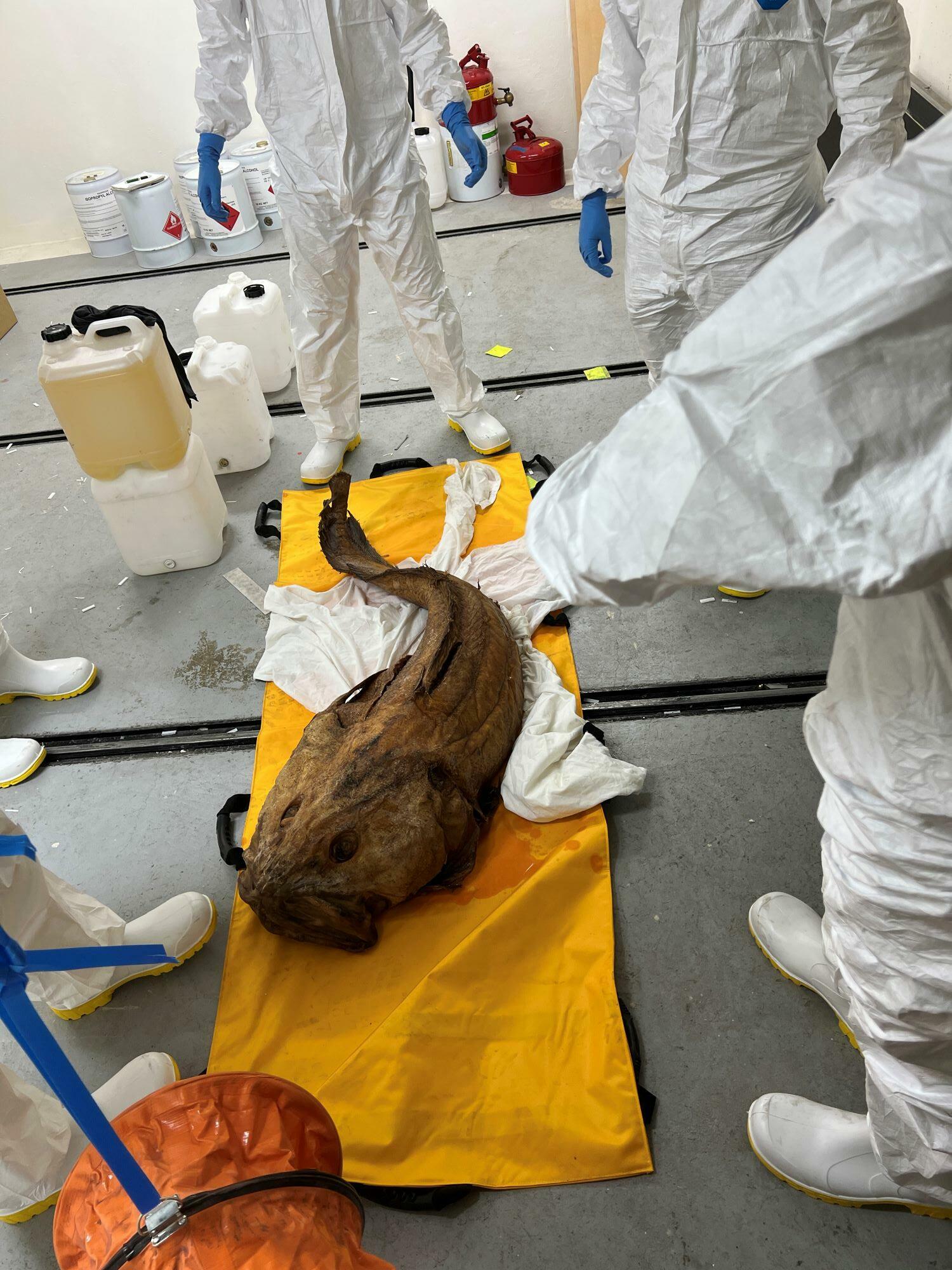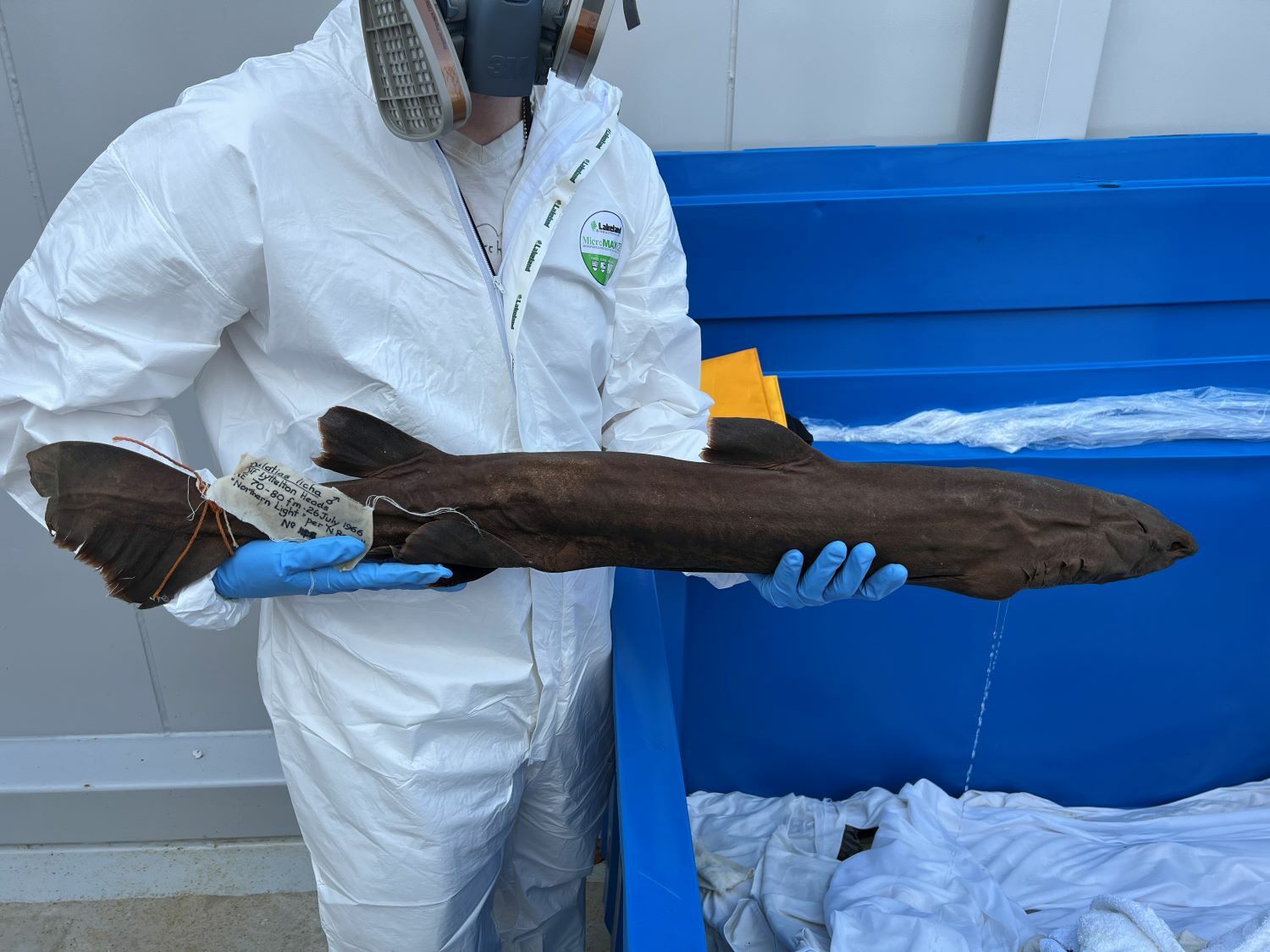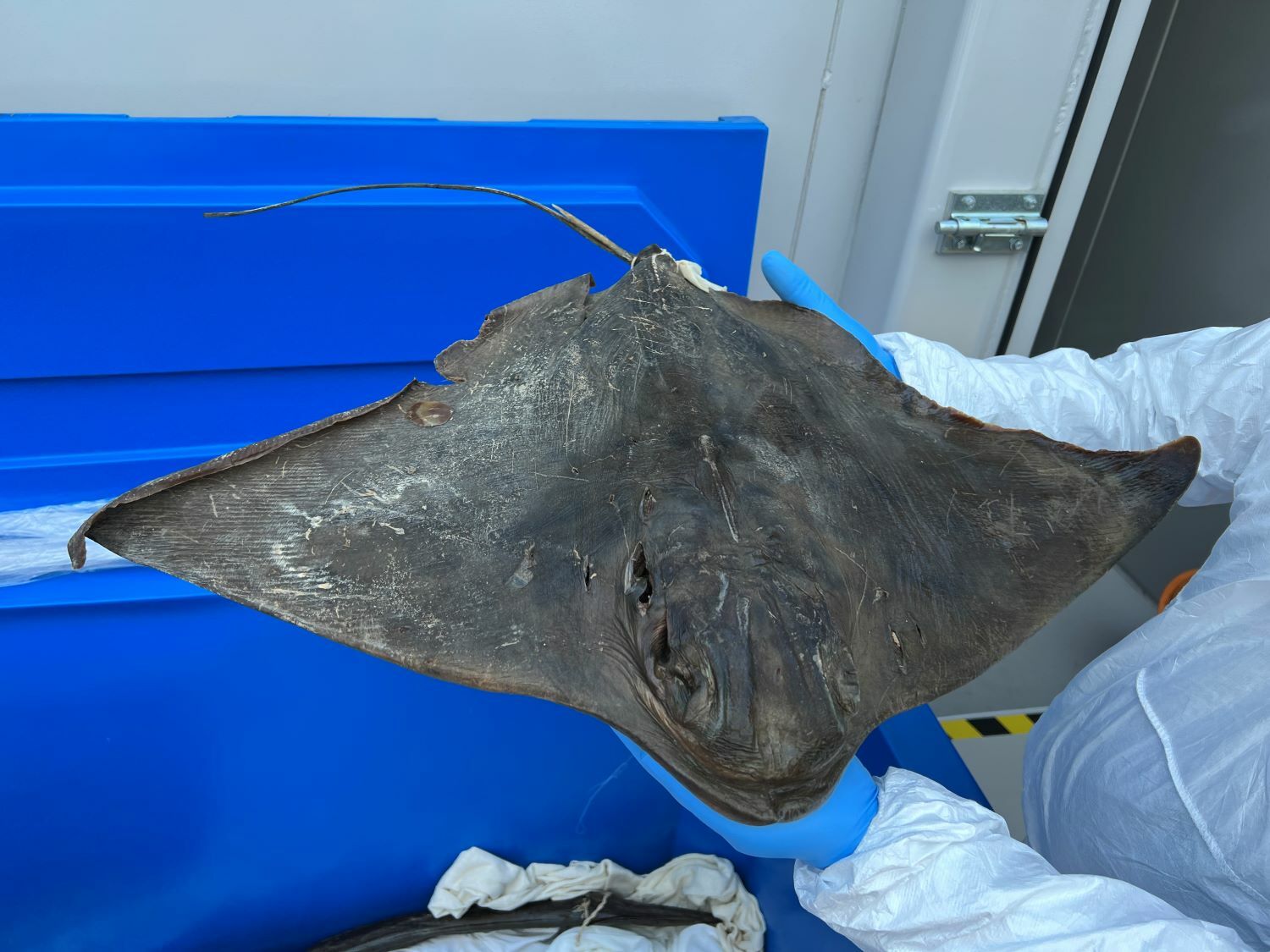
By Johnathon Ridden, Associate Curator Natural History
On 26 July 1966 the Northern Light was trawling along the coast, out past the heads of Whakaraupo (Lyttelton Harbour). Skippered and owned by Norman Brasell of Lyttelton, the boat frequently fished these waters between 1958 and1967. On this day, as loads of fish were hauled from depths of 70 to 80 fathoms (125 to 150 metres) the crew found some interesting and unexpected creatures.
Two of these creatures were sharks, but not the usual commercial species that would have been destined for the fish market. Instead the sharks made the journey over the hill to Christchurch to Canterbury Museum where Mr Brasell donated them as scientific specimens to be cared for in perpetuity. These sharks are too large to store in a typical specimen jar and so they now call a custom-built 500-litre stainless steel tank home, along with about 60 other fish specimens.
Most fish kept in tanks are preserved in formalin and then submerged in about 400 litres of isopropyl alcohol (IPA), a type of preservative which retains their condition. Nearly 60 years later, these fish have just made another journey, as part of the Museum move to offsite offices and storage to make way for the redevelopment of the Rolleston Avenue complex.
The mammoth job of moving the Museum collection and staff to offsite storage and offices included relocating two 500-litre stainless steel tanks filled with fish and about 800 litres of IPA between them. The process to move these fish wasn’t straightforward, as IPA is a class 3 flammable liquid, and the sometimes fragile fish had to be handled with care. If a spark or flame caught it, the results would not be good for the fish or anyone nearby! So, jump onboard and follow along on this expedition, where the fish move process will be explained and some of the interesting specimens from the tanks will be highlighted.
The first thing you need to do when moving large volumes of dangerous chemicals like IPA is to consult the experts. For this the Museum used the services of a chemical transfer operator. They provided guidance and the resources that allowed us to safely take this journey.
The stainless-steel tanks were very heavy, so could not be lifted, and to make things trickier, they could not fit in the Museum lift horizontally, so they had to be emptied for the move. The IPA was decanted from the tanks by the chemical transfer operator into many 20 litre containers.

Handling specimens is another kettle of fish (or in this case, tank of fish). Cue Team “Fish Handlers”. The chemicals used (formalin and IPA) to preserve the fish are not good for humans to touch or inhale, so the team needed to kit up in personal protective equipment (PPE) including Tyvek suits, respirators, double tough nitrile gloves, gumboots and eye protection.
The fish were carefully placed into a large, sealed plastic container. Muslin cloth was used to protect them from abrasion and to stop them rubbing against each other. Some of the large fish were heavy, slippery and delicate, making them difficult to carry by hand. We acquired an emergency response sling (usually used for people who get injured in the outdoors and need to be carried to safety) to move these fish from tank to container.

Here is a giant cod (Lepidion species), demonstrating the sling being put to good use. Check out the video at the end of this blog which shows the move process. Once all fish were transferred, and the IPA decanted, we loaded up a truck with fish, empty tanks and the IPA containers for the journey to their new home for the next 5 years.
When we got there, the empty tanks were placed into a new purpose-built dangerous goods store, the fish container was opened, and the specimens one-by-one were placed back into the stainless-steel tanks.

Here is one of the specimens trawled up by Norman Brasell from Lyttelton Heads, a kitefin shark (Dalatias licha). This species is the largest luminous (light producing) vertebrate on record in the world. It is thought that it creates light to help it search for prey on the dark sea floor, or to match the light conditions it lives in so it can blend in and avoid detection by its potential prey.

Above is a New Zealand eagle ray (Myliobatis
tenuicaudatus) which was also trawled off the shallower sandy/mud bottom of Lyttelton Heads. It is one of several rays in the tank. As rays have wide bodies they cannot be stored in small containers. Finally, once the fish were back in the tanks, they were refilled with IPA and the tanks closed. This part of their journey is now at an end, the fish are docked in a temporary port for the next few years awaiting their return voyage to the redeveloped Museum.





